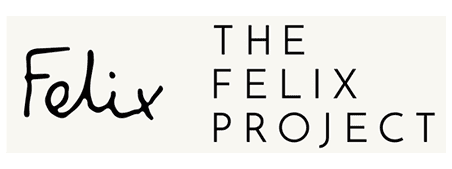VAT codes and rates are handled differently by different accounting software products. This simple guide should help you figure out which rate to use in which situation.
In this blog, we will cover the following software:
- QuickBooks
- Sage
- Xero
- IRIS Kashflow
QuickBooks
QuickBooks VAT rates are highly customisable, so you may not have all of them, or you may have more than one. Each VAT code’s basic rules are covered below:
No VAT (0%) – these transactions will not display on your VAT returns because there is no VAT (0%). These should be used for transitions that do not fall under the VAT umbrella. Transfers between bank accounts, tax payments to HMRC, and director/shareholder drawings/dividends are all examples.
Exempt 0% – this should only be used if your company products exempt supply. Even if there is VAT on the expense, you should choose this option if you make an exempt supply (e.g. insurance) or incur a cost directly related to an exempt supply.
0.0 % Z – used when the supply of items is zero-rated, such as children’s clothing, basic meals, books, and newspapers. If the supplier is not VAT registered, use this code for both zero-rated sales and zero-rated expenses.
20.0% S (20%) and 5.0% R (5%) – the Standard and Reduced VAT rates in the UK are 20.0% S (20%) and 5.0% R (5%). The majority of supplies are subject to energy (and for certain food sales). Use the right rate when making a VAT-able supply or incurring an expense with a VAT component.
20.0% RC (0%) – This is to be utilised for reverse charge expenses at a rate of 20.0& RC (0%).
Sage
T-codes are used by Sage for VAT coding.
T0 – Zero-rated sales income and expenses
T1 – 20% Standard rated supplies on income and expenditure
T2 – For sales or expenditure relating to an Exempt supply
T4 – Reverse charge supplies made to a customer in another EC state
T5 – Reduced rate of VAT to 5%
T7 – Zero-rated expenses from an EC supplier
T8 – Standard rated expenses from an EC supplier (reverse charge)
T9 – Outside the scope and will not be included on a VAT return
Xero
No VAT – these transactions will not appear on your VAT returns since they are not subject to VAT. On transactions that aren’t subject to VAT, this code should be used. Transfers between bank accounts, tax payments to HMRC, and director/shareholder by drawings/dividends are all examples.
Reverse-Charge Expenses (20%) – some service providers are located outside of the UK. Many of these services are provided by companies who do not register for VAT in the UK and hence do not charge VAT. Instead, as a consumer, you must follow the reverse charge guidelines. Receipts or invoices received may have a note on them along the lines of “This supply has been made under the reverse charge scheme”. But either way, please use “Reverse-Charge Expenses (20%)”.
Zero-Rated – when the supply of items is Zero-Rated, such as children’s clothing, basic foods, books and newspapers, this term is utilised. Use ‘Zero-Rated Income’ if your supply is Zero-Rated. Use ‘Zero-Rated Expense’ if an expense was Zero-Rated if the supplier was not VAT-registered.
20% & 5% – the Standard and Reduced VAT rates in the UK are 20% and 5%. The majority of supplies are subject to the Standard 20% VAT rate, although in rare cases, the Reduced VAT rate of 5% is applied to the delivery of energy (and for certain food sales and for certain construction projects). If making a VAT-able supply, use 20%/5% (VAT on Income). If you have been charged VAT on expenditure and it is not directly related to an Exempt supply, use 20%/5% (VAT on Expenses).
Exempt – this should only be used if your company manufactures exempt goods. When making an exempt supply (for example, selling an insurance policy), you should invoice with ‘Exempt Income’ and no VAT should be applied. Even if there was VAT on the expense, all expenses directly related to the provision of exempt goods/services must be recorded as ‘Exempt Expenses’ and no VAT must be claimed.
Import/export of goods – there are other rates for import and export of goods. For most firms utilising Xero, other rates for import and export of goods do not come up very often.
IRIS Kashflow
IRIS Kashflow provides a very simple VAT accounting system where only the rate is provided, and it is set up with a huge variety of rates that are unlikely to apply to you.
0% – for both Zero Rated and Exempt supply and expenses, this should be utilised. Each of these has been demonstrated previously. You should use this rate if a supplier is not VAT registered and the supply would otherwise be liable to VAT.
N/A – these transactions will not appear on your VAT returns. These should be used for transactions that do not fall under the VAT umbrella. Transfers between bank accounts, tax payments to HMRC, and director/shareholder by drawings/dividends are all examples.t
20% and 5% – the Standard and Reduced VAT rates in the UK. The majority of supplies are subject to the Standard 20% VAT rate, although in rare cases, the Reduced VAT rate of 5% is applied to the delivery of energy (and for certain food sales).
Reverse Charge VAT – this is more complicated than the other software options: 1) in your Chart of Accounts, you need to find the codes that you allocate the reverse charge expense to and make sure the “Area” is Outgoing type, 2) then your purchases raised for Reverse-Charge VAT need to have a VAT rate of 20% but the VAT amount needs to be Nil.



